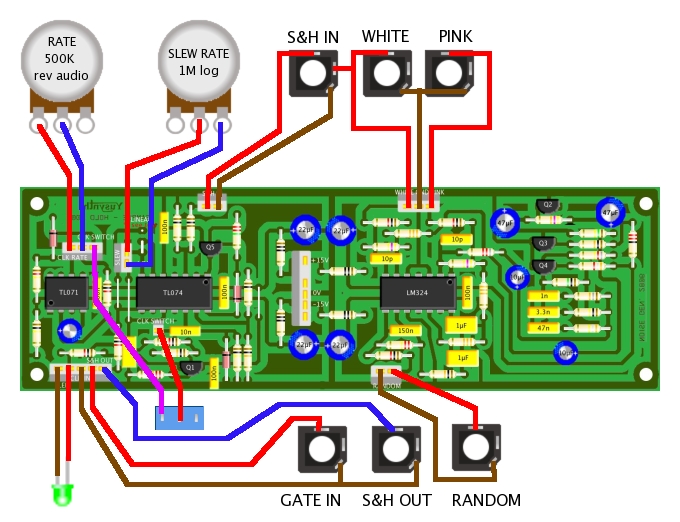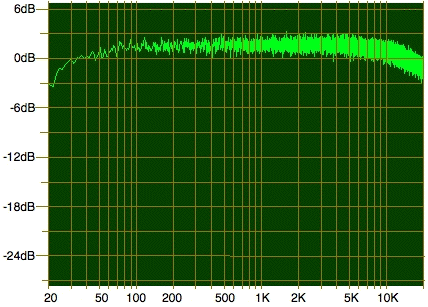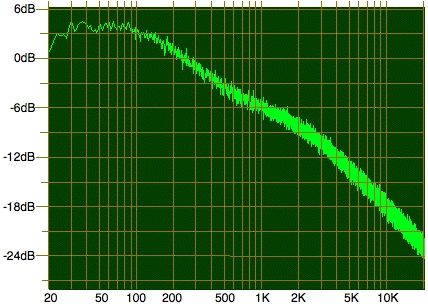| Update nov. 25th, 2016 |
Noise generatorSample & Hold
|
 |
back to summary |
 |
 |
| Description |
| Update nov. 25th, 2016 |
Noise generatorSample & Hold
|
 |
back to summary |
 |
 |
| Description |
|
 |
 |
Schematics |
 |
 |
 |
 |
Components and building details |
|||||||||||||||||||||||||||||||||||||||||||||||||||||||||||||||||||||||||||||||||||||||
| Sample and Hold submodule |
|||||||||||||||||||||||||||||||||||||||||||||||||||||||||||||||||||||||||||||||||||||||
|
|||||||||||||||||||||||||||||||||||||||||||||||||||||||||||||||||||||||||||||||||||||||
| Noise generator sub-module | |||||||||||||||||||||||||||||||||||||||||||||||||||||||||||||||||||||||||||||||||||||||
|
|||||||||||||||||||||||||||||||||||||||||||||||||||||||||||||||||||||||||||||||||||||||
| Wiring |
|||||||||||||||||||||||||||||||||||||||||||||||||||||||||||||||||||||||||||||||||||||||
 |
 |
 |
 |
 |
Setting and trimming
|
|
The trimming is
quite simple, it consists of taking a batch of BC547
transistors and selecting among these which one
gives the highest white noise level while being
symetrically balanced around 0V level, with the
flatest spectrum. In order to do so, it is a good
idea to use a transistor socket for Q2, this way one
can swap easily the transistors to find the best
one. It is a good practice to wait about 1min before
checking the noise level and quality of white
spectrum in order that Q2 has reached a steady
temperature.
Below are the spectra I measured on the two boards I built. Some resistor values may also be adjusted to obtain the desired output levels.  Measured audio spectrum - white noise output (0dB position set arbitrarily)  Measured audio spectrum - pink noise output (0dB position set arbitrarily) |
 |
 |
 |
 |
  |
| Name : Czaba
ZVEKAN Modular project : Location : Basel, Switzerland Website : |
Name
: Patrick Pseudo : Baronrouge Modular project: JHC live lab Location Toulon, France Web site : http://myspace.com/patjhc |
Name :
Federic Monti
Pseudo : Zarko Modular project: Location Gardanne, France Web site : |
|
|||
 |
 |